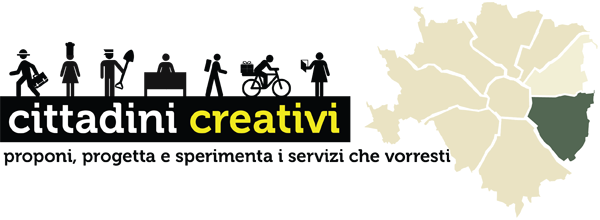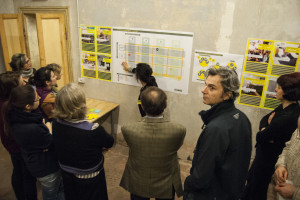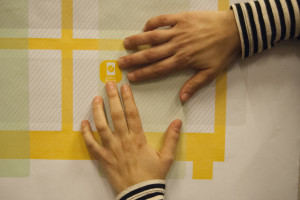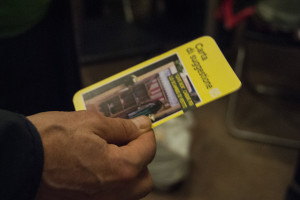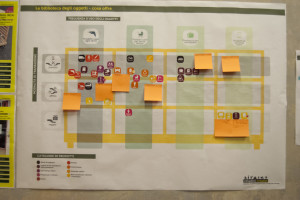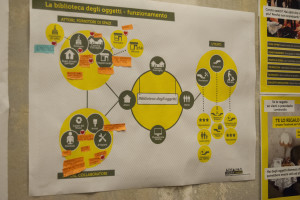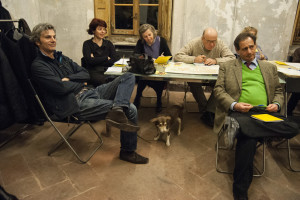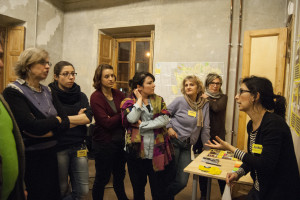Giovedì 21 marzo abbiamo cercato di impostare il progetto di una biblioteca degli oggetti di quartiere. Si è trattato del terzo ed ultimo incontro del ciclo scambio oggetti e competenze.
Abbiamo utilizzato diversi strumenti di co-design, tra cui una mappa esemplificativa della “biblioteca” vera e propria, uno schema per spiegare i vari attori che compongono il servizio e delle “carte di suggestione”, ovvero fotografie di casi studio per ispirare e generare spunti progettuali.
Partendo dalla mappa, abbiamo riempito insieme gli “scomparti” della nostra ipotetica biblioteca, cercando di mettere a fuoco il tipo di transazione preferita (che si è scoperto poi essere il prestito, con un eventuale affitto a prezzo contenuto per i beni ad alto valore monetario/affettivo) e la frequenza d’uso dei prodotti da mettere a disposizione. Insieme ai cittadini abbiamo pensato di considerare gli oggetti ad uso saltuario, quelli che hanno utilizzo breve (ad esempio i prodotti per bambini) e in piccola parte i prodotti ad uso quotidiano.
In seguito, la nostra attenzione si è focalizzata sulla definizione delle tipologie di attori interessanti per il servizio (chi fornisce il patrocinio? dove trovare gli spazi, i fondi ed i materiali?) e sull’individuazione di luoghi realmente esistenti e potenzialmente disponibili in Zona 4. Utilizzando una mappa di Milano ed un ingrandimento specifico sull’Area 4, abbiamo contrassegnato gli spazi utili per la nostra ipotetica biblioteca degli oggetti.
On March 21 we have tried to sketch out a neighbourhood objects library. This was the last session on the topic “exchange goods, tasks and skills”.
We have used several co-design tools: an illustrative map of the library, a graph to indicate the different actors of the service and a set of “suggestion cards” to find sparks and inspirations.
Starting from the map, we have filled the “shelves” of our library, also focusing on the different typologies of transaction (the favourite transaction of the Creative Citizens is to borrow objects with the possibility to rent those with high sentimental/economic value) and the frequency of use of products. We have considered goods with occasional use and also those that are used for a short period (as baby products), together with daily objects.
After we have focused on the local actors of the service (who can power the service? who can supply spaces, money and stuff?) and on the selection of existing and available places in Zona 4. We use a map of the city to indicate real places for locating our neighbourhood objects library.
